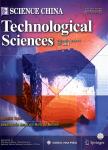Integrated modeling environment and a preliminary application on the Heihe River Basin, China
Integrated modeling environment and a preliminary application on the Heihe River Basin, China作者机构:Cold and Arid Regions Environmental and Engineering Research Institute Chinese Academy of Sciences Lanzhou 730000 China
出 版 物:《Science China(Technological Sciences)》 (中国科学(技术科学英文版))
年 卷 期:2011年第54卷第8期
页 面:2145-2156页
核心收录:
学科分类:0810[工学-信息与通信工程] 082802[工学-农业水土工程] 08[工学] 0828[工学-农业工程] 0805[工学-材料科学与工程(可授工学、理学学位)] 0835[工学-软件工程] 0702[理学-物理学] 0812[工学-计算机科学与技术(可授工学、理学学位)] 081202[工学-计算机软件与理论]
基 金:supported by the Knowledge Innovative Program of the Chinese Academy of Sciences (Grant No. KZCX2-YW-Q10-1) the National High Technology Research and Development Program of China (Grant No. 2008AA12Z205) the Chinese Academy of Sciences Action Plan for West Development (Grant No. KZCX2-XB2-09)
主 题:modeling environment the Heihe River Basin TOPMODEL Noah LSM
摘 要:Environmental and water issues are essentially complex interdisciplinary problems. Multiple models from different disciplines are usually integrated to solve those problems. Integrated modeling environment is an effective technical approach to model integration. Although a number of modeling environments worldwide are available, they cannot meet current challenges faced. Their old-fashion designs and original development purposes constrain their possible applications to the domain of hydrologic or land surface modeling. One of the challenges is that we intend to link knowledge database or ontology system to the modeling environment in order to make the modeling support more intelligent and powerful. In this paper, we designed and implemented an integrated modeling environment (HIME) for hydrological and land surface modeling purpose in a much extendable, efficient and easy use manner. With such design, a physical process was implemented as a module, or component. A new model can be generated in an intuitive way by linking module icons together and establishing their relationships. Following an introduction to the overall architecture, the designs for module linkage and data transfer between modules are described in details. Using XML based meta-information, modules in either source codes or binary form can be utilized by the environment. As a demonstration, with the help of HIME, we replaced the evaporation module of TOPMODEL with the evapotranspiration module from the Noah land surface model which explicitly accounts for vegetation transpiration. This example showed the effectiveness and efficiency of the modeling environment on model integration.



